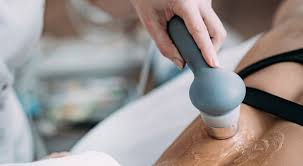Take a Breath!
- Jade Fisher

- Apr 14, 2023
- 3 min read
Did you know you can use your breath as a direct line of communication with your nervous system?
We often think of our breathing as changing in response to our environment, activity or emotion. By voluntarily changing our breathing, we can use this same link in reverse to influence the body!
Running, watching a scary movie, or riding a rollercoaster will all get your breathing and your heart rate up!
Why would you want to communicate with your nervous system?
The human stress response (sweating, increased breathing, increased heart rate, redirection of blood flow, pupil dilation etc.), has not changed much over thousands of years, but human stressors have. No longer do we fear a lion near our cave, but a deadline at work or financial instability. Often, our nervous systems will produce a disproportionate stress response to a situation based on how our brain has processed it.
Refocusing and slowing one’s breathing are way’s of telling our body that everything is ok.
Breath control is a tool one can use to self-regulate in tough situations or practice daily for sustained effects. These sustained effects are a result of overall desensitization of the Central Nervous System (CNS).
What happens when the body feels safe?
When the body feels safe, it can let its guard down; it doesn’t have to reserve as much energy or attention to stay ready and it doesn’t have to respond with such a strong stress response to perceived “threats”. The effects of CNS desensitization are widespread throughout the body, seen in function of our body systems and the affect of our mood!
Types of breathing to try:
Physiological Sighing: Have you noticed that when you are bored, stressed, or tired-you sigh or yawn? When in these states, the sacs in our lungs collapse and don’t inflate as much with each breath and CO2 gets trapped. Having high levels of CO2 in our blood can signal a stress response in our body and cause us to feel panic and anxiety. A deep inhale helps re-inflate the sacs in our lungs and allows us to exhale any retained carbon dioxide so we feel better immediately!
Inhale fully through your nose
At the top of the breath take another "quick sip" of air
Exhale slowly through pursed lips, engaging your low tummy to get all the air out
Try 1-3 of these breaths in a row, intercept with regular breaths if you feel like you need to, when feeling anxious or stressed. Or, practice daily.
A recent study showed this breathing technique had the strongest link to increasing mood and physiological arousal. Read here!
Box Breathing: By inhaling, holding, and exhaling for the same amount of time, we lengthen the breathing cycle. Lengthening the breathing cycle reduces the number of breaths per minute which will have the direct physiological effect of decreasing heart rate variability, blood pressure, and more! Try four seconds to start, although try other lengths of time if they feel better.
Inhale through nose 4s, Hold 4s, Exhale through pursed lips 4s, Hold 4s
Mindful Meditation: If you aren’t interested in structured breathing, try just breathing how you naturally would but pay very close attention to it. Notice the rate and depth of breath, notice where you breath the air to (chest, belly or laterally,) and notice the sensation of the air moving through your nostrils or lips. By paying close attention to our breath, we are bringing ourselves back to the present moment. Mindfulness is a skill we can use to deal with pain, stress and high emotions.
If you would like help with your pain using a holistic approach, a physiotherapist from Shift Physiotherapy & Wellness in Edmonton would be a good fit.
Resources: 2023 Huberman Lab
Balban MY, Neri E, Kogon MM, Weed L, Nouriani B, Jo B, Holl G, Zeitzer JM, Spiegel D, Huberman AD. Brief structured respiration practices enhance mood and reduce physiological arousal. Cell Rep Med. 2023 Jan 17;4(1):100895. doi: 10.1016/j.xcrm.2022.100895. Epub 2023 Jan 10. PMID: 36630953; PMCID: PMC9873947.
Would you like to know more about the author of this blog?
In order to book DIRECTLY with Jade for a physiotherapy appointment check out our online booking site!











Comments